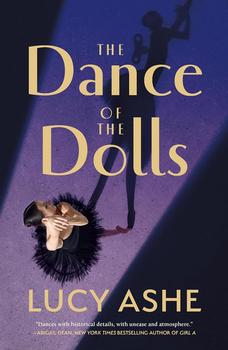Book Club Discussion Questions
In a book club? Subscribe to our Book Club Newsletter and get our best book club books of 2025!
For supplemental discussion material see our Beyond the Book article, The Beginnings of British Ballet and our BookBrowse Review of The Dance of the Dolls.
Please be aware that this discussion guide will contain spoilers!
- Clara and Olivia are identical twin sisters and some characters struggle to tell them apart. They are also ballet dancers, working every day on a discipline that expects each dancer in the corps de ballet to move as one—identical mirror images of each other. What did you think were the differences between the two sisters? And in what ways were they similar? Did their differences get in the way of their relationship and their love for each another?
- The twin sisters have very different motivations and desires. How did the way you related to each of them differ? Was there one sister you found yourself drawn to more than the other?
- Samuel, the pointe shoemaker apprentice, is obsessed with Olivia. However, his feelings for her change throughout the novel. How would you describe these changes? By the end of the novel, how does he feel about her? How did your opinion of Samuel change as the novel progressed?
- Nathan used to be a child star, praised and adored by everyone. He struggles to cope with the change in his status and feels that he is overlooked by some key members of the ballet world. To what extent do you feel his unusual childhood and his subsequent loss of fame impacts the way he behaves throughout the novel?
- The dancers are rehearsing for the ballet Coppélia. The ballet is the story of two young lovers, Swanilda and Franz, who are to be married the next day. Swanilda, however, is jealous of the way Franz appears fascinated by a beautiful young girl named Coppélia, who sits in the window of the house of Dr. Coppelius—a mysterious inventor—reading her book all day. So Swanilda and her friends decide to break into Dr. Coppelius's workshop and meet this girl for themselves. But what they see when they get inside is not at all what they expected. Coppélia is a lifeless doll, not human at all. To what extent did you see this story mirrored in the plot of the novel? How was Nathan influenced by seeing Clara dressed as the doll when she was posing for some photographs on the stage?
- Many of the characters are obsessed with the idea of creation and art, and about whether their artistic endeavors will be recognized and appreciated. Samuel wants to make the tutu that he has designed; Nathan wants to be a successful musician again; Olivia and Clara, each in their own way, want to be famous dancers. How does this obsession impact on the decisions they all make? And to what extent are they living in the realm of fantasy rather than reality, and does this change for any of the characters during the novel?
- Ballet provides rhythm and routine for Clara and Olivia: they go to daily ballet class, rehearse, perform, endlessly darn and sew ribbons onto new pairs of pointe shoes. However, they also worry about making enough money and finding employment out of season. What did you find most interesting about life for a ballet dancer in the 1930s? And what interested you about the historical setting?
- The sisters' mother is sick and is a permanent resident at Colney Hatch mental hospital. How do Clara and Olivia cope with the challenge of visiting their mother, especially when she places such high expectations on them and their dancing careers? What do you think their mother finds most appealing about her daughters being ballet dancers? Or do you think she has always struggled with being a "ballet mother"?
- All of the dancers have little routines and rituals that give them luck before a performance or help them to focus before a day of rehearsals. What did you think about their choice of the well beneath the theatre as the location for these superstitions? Why do you think so many performers turn to these types of rituals?
- We know that Clara has an offer to go to America and pursue her dancing career in new and exciting ways. How do you think the sisters will find living apart? Do you think they will struggle or are there any ways in which they might flourish?
ENHANCE YOUR BOOK CLUB
- Go to the ballet or watch a recorded performance of a ballet on TV or online with your book club. Can you see evidence of the toil and grit and pain beneath the poise and grace of the dancers?
- Read the short story that inspired the ballet Coppélia: E.T.A. Hoffmann's 1816 story called "Der Sandmann." See if you can spot ways in which The Dance of the Dolls draws on elements of both the comedy ballet and Hoffmann's gothic short story.
- Explore the skill and technique that goes into making pointe shoes. Watch the excellent videos on the Freed of London website and social media to learn more about this process.
- Learn more about the history of the Royal Ballet. I highly recommend Dame Ninette de Valois's 1957 memoir Come Dance with Me, a book that tells the story of the early years of the company.
Unless otherwise stated, this discussion guide is reprinted with the permission of Union Square & Co..
Any page references refer to a USA edition of the book, usually the trade paperback version, and may vary in other editions.
